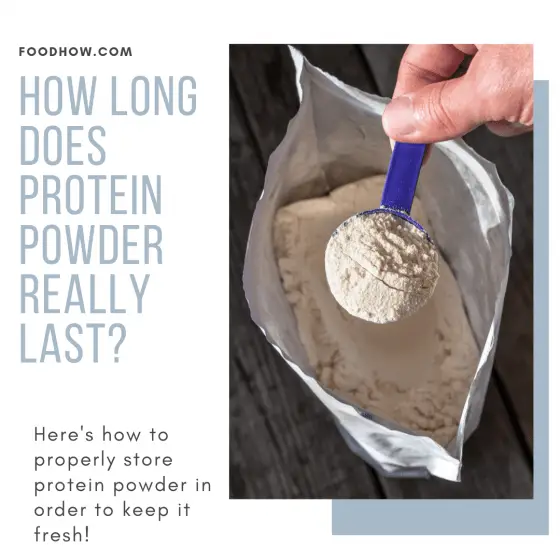Imagine if each scoop of your protein powder was like a time capsule, preserving a moment of nutritional excellence. Yet, without proper care, these capsules can succumb to the ravages of time and elements, losing their potency and flavor. In this exploration of protein powder storage, we delve deep into the nuances, revealing how to maintain the fresh appeal of this indispensable supplement, whether it comes in a tub or a pouch.
When it comes to protein powder, freshness is not merely a luxury; it’s a necessity. Just like fine wine, the quality of protein powder can diminish over time, resulting in a lackluster taste and reduced effectiveness. The transition from vibrant, flavor-rich sustenance to a stale, uninspiring powder can happen subtly. One day it’s a delectable addition to your smoothies, and the next, it’s gathering dust in the back of the pantry. To ensure that your protein powder remains a vibrant lifeline, understanding proper storage methods is crucial.
First, let’s consider the environment. Temperature and humidity play significant roles in the longevity of protein powder. Imagine a pristine mountain stream: cool, clear, and serene. Now envision that stream under the blazing sun, evaporating into nothingness. Heat and moisture can hasten the degradation of protein powder, much like that stream drying up under harsh conditions. The ideal storage space is cool, dry, and dark. A pantry away from direct sunlight or a refrigerator is an optimal choice. However, be cautious: extreme cold can also affect the texture and solubility of protein powders, particularly those that are dairy-based. A constant temperature that simulates a calm mountain stream will serve your protein powder well.
Next, let’s talk about the packaging. Protein powders generally come in two forms: tubs and pouches. Tubs can be likened to sturdy castles, providing durability and rigidity, while pouches resemble nimble tents, offering portability. Yet, both have their particular strengths and weaknesses. Tubs, often hermetically sealed, protect powder from contaminants and allow for easy scooping. However, once opened, they can become prone to moisture and air exposure. On the other hand, pouches, made from resealable materials, can be user-friendly but may allow a greater potential for air intake if not sealed properly after use.
For both forms, the intrinsic battle against air is paramount. Exposure to oxygen causes oxidation, which can lead to a gradual breakdown of the protein’s molecular structure. This may result in both a decline in flavor profile and nutritional value. To combat this, always close the lid tightly after scooping from a tub or ensure that the zipper seal on a pouch is completely shut. In addition, consider adding an oxygen absorber to either storage method. These tiny packets act as guardians, capturing any residual oxygen that dares to intrude, thus maintaining the sanctuary of freshness within the container.
Moreover, the chocolaty delight or vanilla bliss of your protein powder may be susceptible to contaminants. It’s akin to a theater stage, where every element must come together to create a harmonious performance. External odors from spices, fruits, or cleaning supplies can infiltrate the protein powder, transforming its once-pure essence into a medley of unwanted flavors. Keeping protein powder isolated from stronger-smelling substances ensures it retains its distinct identity.
Now, let’s discuss the importance of purchasing size. Many enthusiasts tend to buy protein powder in bulk. While it may seem like a cost-effective decision—much like buying a large jar of peanut butter intended for communal enjoyment—this strategy may lead to waste if not managed properly. Opt for packaging sizes that suit your consumption habits. If your routine involves frequent protein shakes, purchasing larger tubs in increments might be wise. Conversely, if your protein intake is more sporadic, smaller packages keep the product fresher for longer.
Of course, the shelf life is the final arbiter of your protein powder’s freshness. Most protein powders will list a “best by” date. However, this date merely suggests a timeframe for peak quality. The powder may still be safe to consume beyond this date but may not offer the full spectrum of benefits. Always do a sensory check: look for changes in color, smell, and texture. If it doesn’t evoke that initial sensation of delight, it might be time to bid it farewell and source a fresh supply.
In conclusion, maintaining the freshness of protein powder is akin to cultivating a cherished garden. With thoughtful consideration of environmental factors, careful management of packaging, and awareness of potential contaminants, one can ensure that each scoop offers a delightful burst of flavor and nutrition. Treat your protein powder as you would a rare artwork; with reverence and care, so that it reflects the vitality and vigor you desire. Proper storage not only enhances the longevity of your nutritional companion but also enriches your health journey, allowing you to savor every nourishing sip.
